Daughter of the Prince de Condé's writing master[1], Jeanne-Louise Vallain, known by her pseudonym Nanine. During her artistic career, she was representative of the new generation of female painters from well-educated, privileged families, close to aristocratic circles. In their quest for social advancement, these families placed their daughters in prestigious painting studios. Indeed, the practice of drawing was fashionable in the upper echelons of society.
As a result, the young Nanine Vallain frequented the studios of Joseph-Benoît Suvée and Jacques-Louis David, apparently simultaneously. For the 1788 Exposition de la Jeunesse, she presented two works, both tributes to her two masters. The first, entitled Une élève
costumée à l'antique et qui brûle un grain d'encens sur l'autel de la Peinture (Fig. 2).
Attributed to Suvée, this painting is actually Nanine Vallain's work, exhibited in 1788. Indeed, the exact correspondence between the subject and the title of the booklet, as well as the manner, much closer to another painting by the artist preserved in the Musée Cognacq-Jay, allow us to attribute it without a doubt to Vallain. What's more, a portrait of Suvée sketched in the background is a tribute from the pupil to his master - the sketch of Suvée's portrait stands out in the background. The second is a self-portrait (Fig. 1) in which the young painter depicts herself copying the figure of Camille from David's Oath of the Horatii.
From 1790 onwards, Nanine Vallain undertook the production of a patriotic large-format as proof of her full embrace of the ideology of the new French regime. In this way, the young artist swept aside any suspicion that she was a counter-revolutionary. Her masterpiece Liberté was donated by the artist to the powerful Jacobin Club, which installed it in the heart of its meeting room. A change in the artist's drapery is evident, as it becomes more complex.
At the same time, Vallain was approached by the art dealer Jean-Baptiste Lebrun, husband of Élisabeth Vigée-Lebrun. Lebrun volunteered to organize the 1791 Exposition de la Jeunesse, proposing a newly-built exhibition hall on rue de Cléry. Lebrun's initiative differed from previous events of this type in its commitment to quality, both in the selection of paintings and in its organization, which rivaled that of the official Salon. For this exhibition, Vallain commissioned a painting depicting an episode in the story of Herminie, a rare subject taken from Tasse's Jerusalem Delivered. With this theme, she followed in the footsteps of Joseph-Benoît Suvée, who had painted two pictures of the heroine in 1776.
Opened on June 30, 1791, the exhibition booklet mentions at no. 13: “Un tableau représentant Herminie parmi les Bergers, traçant le nom de Tancrède sur l'écorce des arbres, de 4 pieds et demi sur 3”. This strange title, since it presents two distinct scenes, seems to have been given out of necessity for the artist, before deciding on his final composition. In fact, this description is Vallain's first idea of his work. It is also possible that the artist hesitated between the two episodes. Indeed, to enable the booklet to be drawn up, the dimensions and descriptions of the paintings were sent to Jean-Baptiste Lebrun particularly early, before the actual completion of the works destined for the exhibition, which explains why the dimensions correspond even though she did not exactly represent the given subject. In his Avis au public et aux artistes, on the first page of the final catalog, Lebrun deplores the inaccuracy of certain entries:
“This catalog cannot be as well written as we would have wished, given that MM. Les Artistes give notes, either badly explained, or so badly written, that it is impossible to guess them; and, still bring their note, or their work, this day 30, opening day.[2]”
A late and unexpected reworking of Vallain's Herminie would be the cause of the libretto's error about it. A study of the stretcher, which is original, and of the paint layer during the restoration, provides concrete evidence in this direction. Indeed, the painting's stretcher was originally mounted to support a portrait format. Clearly, Vallain encountered difficulties in executing his first idea, and may have belatedly chosen to tilt his canvas, abandoning a vertical format to develop his composition horizontally. The paint layer and premature cracking also testify to the existence of an underlying painted composition, abandoned and covered by the final composition. While the work was being finalized, the lower painted layer was still soft, while the surface of the composition was drying more rapidly. The movement induced by the cross-linking of the oil in the lower layer is the cause of the specific craquelures visible on the surface.
Last but not least, a contemporary critic provides additional information on the work and seems to agree with our thesis. First of all, the critic refers to the painting under the title “Herminie parmi les Bergers” (“Herminia among the Shepherds”). By mentioning the presence of several ewes and a dog, his description seems to rule out the possibility of a vertical composition given the number of protagonists depicted:
“Mlle Nanine Vallain is already known for her simple drapery of a good stile [sic], for her fresh and pleasant color. But her painting of Herminie among the shepherds, the most salient of those she exhibited [sic] this year, makes us wish she would study shapes and proportions more: the dog accompanying this shepherdess, as well as the heads of her sheep, are of a fatness that makes their guardian look skinny.[3]”
Fig. 1. Self-portrait busy copying the figure of Camille after Jacques-Louis David's Oath of Horace; c. 1787-1788; oil on canvas; 127 x 96 cm. Paris, Musée Marmottan (Inv. 175).
Fig. 2 A student in antique costume burning a grain of incense on the altar of Painting; c. 1788; oil on canvas; 88 x 117 cm; private collection.
Fig. 3 La Liberté; c. 1790-1791; oil on canvas; 128 x 97 cm; Paris, Musée du Louvre (Inv. 8258); on loan to the Musée de la Révolution de Vizille.
[1] Louis-Pierre Vallain.
[2] Catalogue of works in painting, sculpture, engraving, architecture, etc. Exposés le 30 Juin, jour de la petite Fête-Dieu, jusqu'au 15 Juillet. Par MM. les artistes libres, Paris, Prault, 1791, p. 9.
[3] Exposition des Tableaux faits par MM. les Artistes libres le 30 juin 1791, jour de la petite Fête-Dieu jusqu'au 15 juillet dans la Salle de M. Lebrun, capitaine du bataillon de St Magloire, rue de Cléry, Collection Deloynes, t..XVII, n° 428, p.5-6.











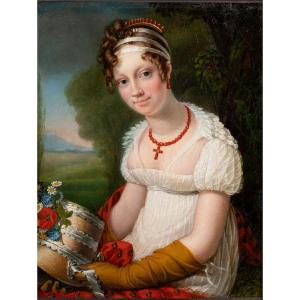





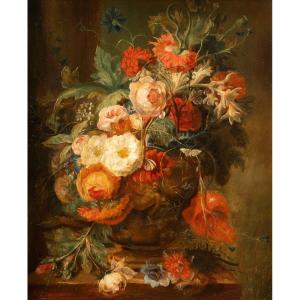
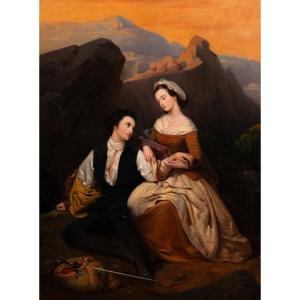





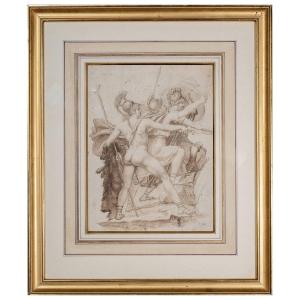





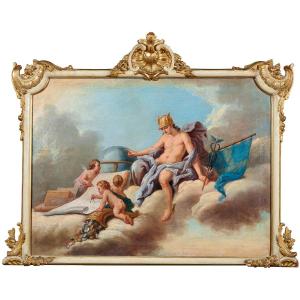



 Le Magazine de PROANTIC
Le Magazine de PROANTIC TRÉSORS Magazine
TRÉSORS Magazine Rivista Artiquariato
Rivista Artiquariato